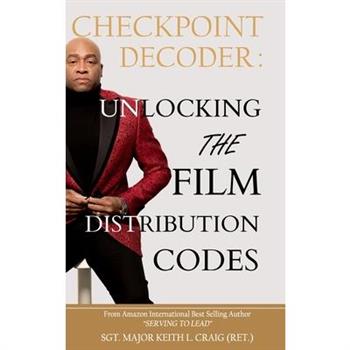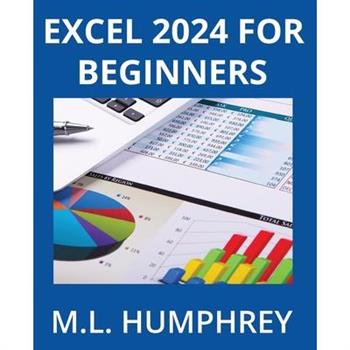Digital Transformation in Procurement
With digitalization a consistent theme on every procurement leader's agenda, this book provides a practical approach, empowering leaders to skilfully navigate the intricacies of digital transformation in procurement. Many procurement leaders struggle to deliver their digitalization agendas due to slow, costly and underwhelming results. Digital Transformation in Procurement is designed to help procurement leaders embrace digital transformation and drive top-line growth. Covering the essential success factors, the impact of digitalization on people, organization processes and technology, this book helps leaders in procurement make digitalization transformation a success and deliver value at scale. Exploring the impact of digital transformation on procurement, this book covers key challenges, new technologies and how procurement leaders can make digitization work for them. Digital Transformation in Procurement is a practical resource offering valuable insights, frameworks and examples from global procurement transformation programmes. Taking a holistic approach to digital transformation, this is the book every procurement leader needs to launch their new procurement strategy for the digital age.
Isd from the Ground Up
Your All-In-One Guide to ISDKnown as "the man who wrote the book on ISD," Chuck Hodell offers a comprehensive and practical handbook on core instructional systems design (ISD) practices and principles with a practitioner's eye.This updated fifth edition covers all the basics and many advanced tenets of ISD, walking you through each phase, including advanced concepts such as microlearning, social media, and leveraging technology. Stand-alone chapters offer crucial support to practitioners building foundational skills, while in-depth tutorials on subjects such as collaborating with experts offer rich insights to guide the credentialed designer.This fully revised and expanded volume offers new case studies, discussion questions, and sample design and lesson plans, ISD From the Ground Up demystifies the learning design process. Whether you are just getting your feet wet or have extensive experience in ISD, this industry staple provides the essential building blocks and more for ISD mastery.
IOT Based Robotic Car for railway track detection system
Build Your Beverage Empire
Launch or Build Your Beverage Venture With Expert AdviceDive into a dynamic world of beverage entrepreneurship where traditional rules are rewritten! In this enlightening guide, you'll explore the exciting realm of online sales, social media buzz, and direct consumer engagement, reaching beyond the confines of convenience stores to platforms like Amazon, TikTok, and Meta. Discover how small-scale beginnings, starting with just one pallet, reshape the industry."The post-COVID era has revolutionized the beverage supply chain, sales, and distribution, creating unprecedented opportunities."For the savvy entrepreneur, this means the ability to connect directly with your ideal customers.This book is more than a guide; however, it's a real blueprint for success. You'll gain invaluable insights into developing and marketing innovative beverages. Uncover groundbreaking strategies and techniques to carve out a unique niche and outshine the competition. Whether you're an aspiring entrepreneur or looking to launch a new beverage product, the industry is ripe with possibilities. The new beverage business world includes online sales, social media promotion, and finding your consumers not only in a convenience store but on Amazon, TikTok, or Meta. Beverage development also changed; gone are the days of ordering five truckloads; in exchange, beverage entrepreneurs can start with one pallet.COVID changed the entire supply chain for the beverage business alongside beverage sales and distribution. This is amazing for consumers ordering beverages online and for entrepreneurs, as they can now sell directly to their perfect customers and drop ship to their homes.Yes, you'll see the blueprint and step-by-step guide on how to develop and sell beverages. You will also discover cutting-edge ideas and techniques to disrupt the beverage industry and separate yourself from the competition. If you are considering launching a new product or business as an entrepreneur, the beverage industry might be for you.Topics Covered Include: ✔ How to Start Your Business✔ Beverage Development✔ Beverage Marketing✔ Beverage e-Distribution✔ Beverage Formulation✔ Entrepreneurship Mind-Set✔ Beverage Packaging✔ Beverage Sales✔ Beverage Distribution✔ Beverage Business Funding✔ Beverage Online MarketingIn this third edition of the book, Jorge Olson decided to rewrite the entire text, not only updating it but expanding it to cover more material on online marketing, Amazon sales, much more detail on beverage development and formulation, and unique details on beverage business modeling and creating your business plan to get funding. This book is a complete guide for beverage entrepreneurs on how to start their new business.What's New in The Third Edition?How to leverage social media to sell more drinksSell online, including your store, social media, and AmazonBeverage development and contract manufacturingSmall batch white label and private-label beverage productionPost-COVID opportunities and how to take advantage of them
Probability, Statistics and Other Frightening Stuff
Probability, Statistics and Other Frightening Stuff (Volume II of the Working Guides to Estimating & Forecasting series) considers many of the commonly used Descriptive Statistics in the world of estimating and forecasting. It considers values that are representative of the 'middle ground' (Measures of Central Tendency), and the degree of data scatter (Measures of Dispersion and Shape) around the 'middle ground' values.A number of Probability Distributions and where they might be used are discussed, along with some fascinating and useful 'rules of thumb' or short-cut properties that estimators and forecasters can exploit in plying their trade. With the help of a 'Correlation Chicken', the concept of partial correlation is explained, including how the estimator or forecaster can exploit this in reflecting varying levels of independence and imperfect dependence between an output or predicted value (such as cost) and an input or predictor variable such as size.Under the guise of 'Tails of the unexpected' the book concludes with two chapters devoted to Hypothesis Testing (or knowing when to accept or reject the validity of an assumed estimating relationship), and a number of statistically-based tests to help the estimator to decide whether to include or exclude a data point as an 'outlier', one that appears not to be representative of that which the estimator is tasked to produce. This is a valuable resource for estimators, engineers, accountants, project risk specialists as well as students of cost engineering.
Artificial Intelligence in Modern Business
SDG x ESG Entrepreneurial Education for 2030
Multi-Criteria Evaluation of Assortment and Suppliers in E-Commerce
In a rapidly changing e-commerce environment, effective supplier selection and inventory management are critical to maintaining competitive advantage and operational efficiency. This book introduces innovative multi-criteria decision-making models (MCDMs) and improved inventory classification systems tailored specifically for online retail environments. Combining theory and research-based case studies, the book highlights the importance of comprehensive criteria in supplier and assortment evaluation and the application of artificial intelligence in optimising decision models. It provides valuable insights and practical solutions for improving supply chain performance and inventory management in the e-commerce sector. It will be of great interest to scholars and students of logistics and e-commerce and supply chain management.
The Possibility Wheel
This is a practical guide to improved medium-term decision-making for business leaders. The quality of decisions made by organisations and governments affects us all: decisions made with old paradigm assumptions may not take advantage of opportunities presented by the new, emerging paradigm; they restrict our ability to develop resilient choices. In The Possibility Wheel, Patricia Lustig and Gill Ringland collate and analyse the trends that underlie the changes that are overturning our economy and society. They provide a clear framework for making sense of what is happening around the world: Presenting evidence from the best sources Outlining 'Forces for Change' that surround us Evaluating the disruptive 'Threats' that we face and examining the fracturing social and economic 'Backbones' on which we all rely. Then they offer a toolset (the Possibility Wheel) to help senior executives and management teams make informed and resilient choices and strategic decisions. The Possibility Wheel brings global evidence to play in your locality and organisational context -- so you can explore opportunities, develop resilient choices, make more robust decisions and enjoy better outcomes.
Factors that impact working capital management
Public Participation in Governance of Industrial Safety Risks
This open access book contributes to the increasing trend toward greater public participation in decision-making in many areas of public life, particularly in the field of the environment and sustainable development. It describes the outcome of a two-day workshop, organized by the Foundation for an Industrial Safety Culture in 2023, that addresses the continuing sensitivities surround the impact of hazardous industrial activities. Public Participation in Governance of Industrial Safety Risks brings together international academic experts as well as industrial and institutional representatives to shed light on the topics discussed during this workshop. Through the viewpoints of experts from various disciplines, industrial sectors, and countries, it offers an opportunity to gain a better grasp of the multiplicity and complexity of participatory processes and to understand their expected benefits, their drawbacks, and potential pitfalls. The work supports the making of better-informed decisions, especially by industrial or regulatory actors, to engage or not with public participation.
Foreign experience of creating new tourism routes
Becoming a Certified Six Sigma Master Black Belt
Six Sigma is a systematic approach to making significant or breakthrough process improvements. Currently, Six Sigma exists as a team-based problem-solving approach applied by trained project facilitators, which are typically called belts. Depending on the level of expertise in the methodology and improvement tools, belts can be White, Yellow, Green, Black, and Master Black Belts (MBB). The Master Black Belt is the highest level of expertise in Six Sigma approaches, tools, and techniques.In companies implementing Six Sigma, the role of Master Black Belt is to train, guide, and coach Black and Green belts to execute their improvement projects efficiently. In addition to this, Master Black Belts often are responsible for overseeing the organization's entire improvement program with the ultimate responsibility for creating a robust culture of continuous improvement. Thus, the competence of MBBs is critically important for the success of and long-term sustainability of Six Sigma in organizations.This book is ideal for all those who wish to get trained and certified as Master Black Belts and train others to achieve breakthrough results using Six Sigma to shape and execute improvement projects. The book has the right balance between topics such as strategic planning, project selection, stakeholder management, and training design, to Advanced Statistical Techniques such as propagation of errors, destructive measurement systems, general linear models and components of variation, and complex blocking structures in Design of Experiments. This book was written by three expert Master Black Belts certified by the American Society for Quality (ASQ). Moreover, they are from different parts of the world and industry, which brings great diversity to the contents of the book.
Research, Development and Innovation in the Creative Industries
What does effective research and development look like in the creative industries and how might it lead to successful innovation? This book is an answer to that question.Building upon place-based creative industry research, the book focuses on evidence from the media sector, while encompassing a range of creative practices, from digital tourism to dance. Leveraging unique empirical data from the Welsh creative industries, the authors map a series of pathways for creative businesses. In so doing, the book offers new frameworks for assessing innovative practice and highlights options for tailored institutional funding.Channelling research insights, this shortform book helps researchers, policy-makers and reflective practitioners to understand how to deliver effective strategies for the creative sector.
Enterprise Design, Operations, and Computing
This book constitutes the refereed proceedings of the 28th International Conference on Enterprise Design, Operations, and Computing, EDOC 2024, held in Vienna, Austria, during September 10-13, 2024. The 18 full papers included in this book were carefully reviewed and selected from 70 submissions. They were organized in topical sections as follows: AI, ML and Agents; BPM and WFM; Business Models, Platforms and Strategic Management; Enterprise and IT Architecture; IT and Software Architecture; Modeling Methods, Data and Component; Process Mining and Monitoring; and Sustainability and Resilience.
Credit cooperatives and socio-economic development
Toyota's Improvement Thinking from the Inside
This book helps close the gap in how organizations think about and implement Toyota's continuous improvement methods and management system. The Toyota Production System (TPS) is often viewed and adopted in organizations as a collection of tools to remove waste and streamline processes to provide products or services faster, better, or cheaper. While the tools for improvement and management routines are important, they are not where the true power of the system lies. The author's eight-year journey inside Toyota was full of experiences that developed the power for continuous improvement. These learnings are rarely if ever captured in books on lean or taught in business and engineering classrooms.This book describes, in part, how Toyota, through its coaches and leaders, develops its members' capabilities through a series of continuous improvement (kaizen and problem-solving) activities. For many members of Toyota, this process results in a personal transformation that ultimately leads to organizational transformation.This book presents a model for organizational transformation that includes technical systems, organizational principles/values, and spirituality/ mindset to achieve enduring high performance. This book shifts from the continuous improvement development way at Toyota to case studies illustrating the thinking and mindset to other organizations on their journey to transformation. It uses the TPS tools as an entry point for development and highlights the role that organizational values play in the pace of transformation. Several case studies are presented that include manufacturing (performance improvement of a production line), healthcare (improvement in neurosurgery patient flow), and education (improvement in standardized test scores).The key benefit of this book is that it provides insights into Toyota's culture and improvement thinking to help other organizations reach enduring high performance. The book is written for a wide audience so that readers outside of manufacturing organizations can understand the broad applicability of the Toyota way. In addition, it is written succinctly to help readers and practitioners focus their transformation efforts.Sarah K. Womack is a distinguished researcher and consultant in the field of Industrial Engineering. Her Ph.D. in the department of Industrial & Operations Engineering from the University of Michigan, Ann Arbor focused on the intersection of lean manufacturing practices and ergonomics. She has published peer-reviewed articles, presented as guest speaker at conferences and universities, and facilitated copious workshops on lean manufacturing. She has established herself as a leading scholar and consultant of one of the world's most coveted management systems, the Toyota Production System. She spent eight years on a journey in various leadership roles of "learning by doing" under some of the world's greatest lean thinkers at Toyota. Applying Toyota's management thinking, she consults across an array of industries with an innovative and practical approach to continuous improvement, organizational transformation, and operational excellence - coaching at every level from the C-suite to the shopfloor. She continues to learn and collect a patchwork of stories to teach and inspire others on their operational excellence journeys. In addition to her writing, consulting, and speaking engagements, Sarah is passionate about traveling the world and immersing herself in diverse cultures.
Strategic Design and Digitalisation of the Supply Chain
Digital supply chains increase companies' competitiveness. A systematic approach describes the development of strategies to achieve challenging corporate goals with the supply chain and its digitalisation. These include better fulfilling customer requirements, increasing sales, and simultaneously reducing costs. Strategy patterns are presented, and their implementation in companies is described. Entrepreneurs, supply chain, and operations managers receive a practice-oriented guide on how to align their company for the future. The tried-and-tested methods and approaches accelerate and facilitate strategy development, implementation, and support through digital solutions. The focus is on making/buying decisions, finding solutions for skills, digital solutions in production technology (3D printing), and the impact of Industry 4.0 and environmental aspects on the supply chain. Practical examples will show how new solution concepts support the design of future-oriented supply chains. The trigger points that could jeopardise a successful supply chain will also be presented, as well as the design for time and cost optimisation in the overall chain. How must a company fundamentally question the historically grown supply chain? What is essential in supply chain optimisation? The strategies presented define the processes, architectures, the use of digital technologies and the deployment of resources - considering the overarching corporate strategy, which calls for shorter delivery times and lower costs to remain competitive.



















































